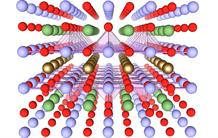Scientific result | Materials
Dynamic Observation of the Superconducting Transition in a Cuprate
 © Julien Bobroff, LPS, Orsay
© Julien Bobroff, LPS, Orsay
Folder chapeau
A
new photoemission spectroscopy technique makes it possible to observe the
superconducting transition in high-temperature superconductors. This technique
can also be used to study the dynamics of highly correlated systems such as
ultra-cold atoms.
Published on 4 April 2017
Body text
Superconductivity is manifested by the appearance of correlated electron pairs, otherwise known as Cooper pairs. The energy of the pairs formed is inferior to the sum of the energy of the separated electrons, which in terms of electronic energy band, translates to the opening of a gap.
After the initial electronic excitation of a superconducting cuprate (Bi2Sr2CaCu2O8+d) by a femtosecond laser pulse, the physicists were able to visualize the quasi-instantaneous closure of this gap utilizing a new angle-resolved, time-resolved photoemission spectroscopy technique. The gap only reopens after a few dozen picoseconds (10-12 s) and is highly anisotropic: maximally according to the direction of the copper-oxygen bonds and minimally at 45 °. This observation provides valuable information about the nonconventional pairing mechanism in copper oxide superconductors.
The researchers hope to test experimental protocols that could improve the phase coherence of the condensed pairs. Understanding the physics of an out-of-equilibrium condensate could even potentially indicate ways to prepare metastable phases capable of carrying super currents above the critical temperature.
This work was completed in collaboration with the Laboratory of Solid-State Physics (CNRS, Paris-Sud University) and UPMC.
Top page
Top page